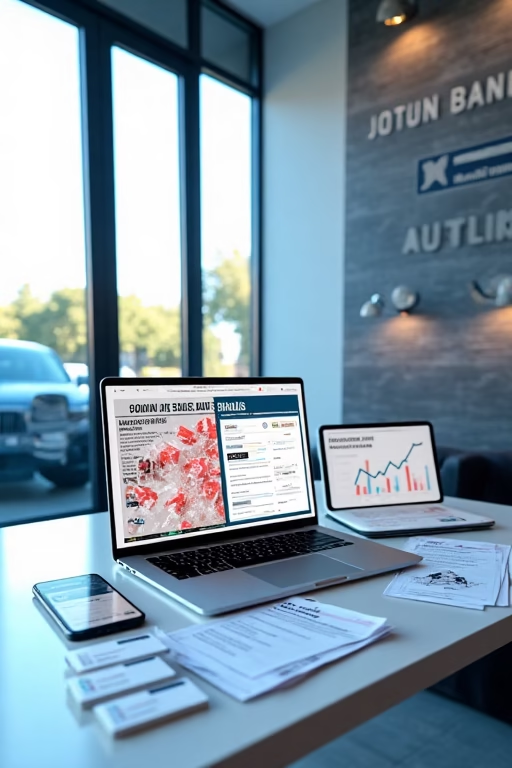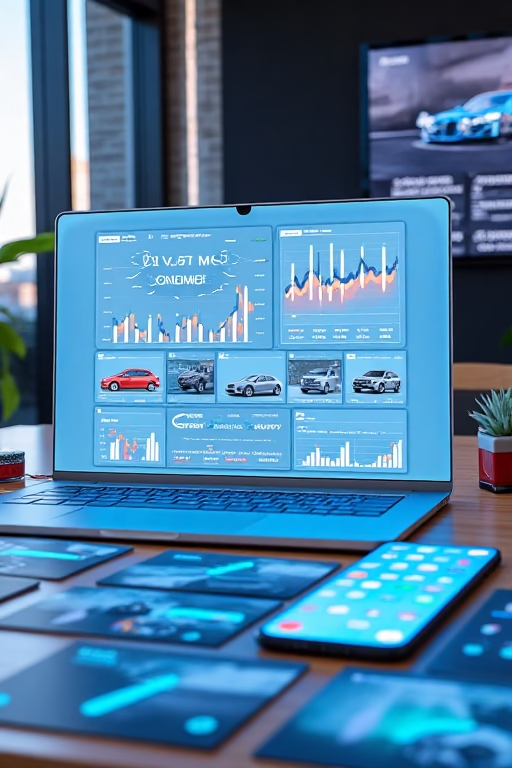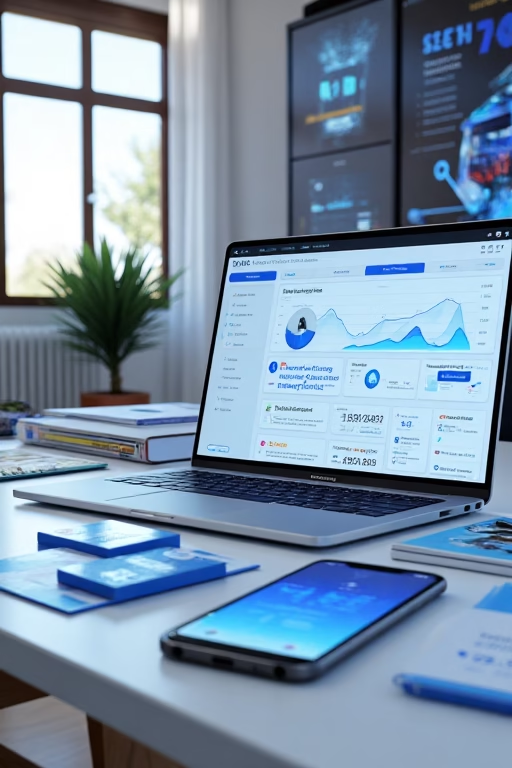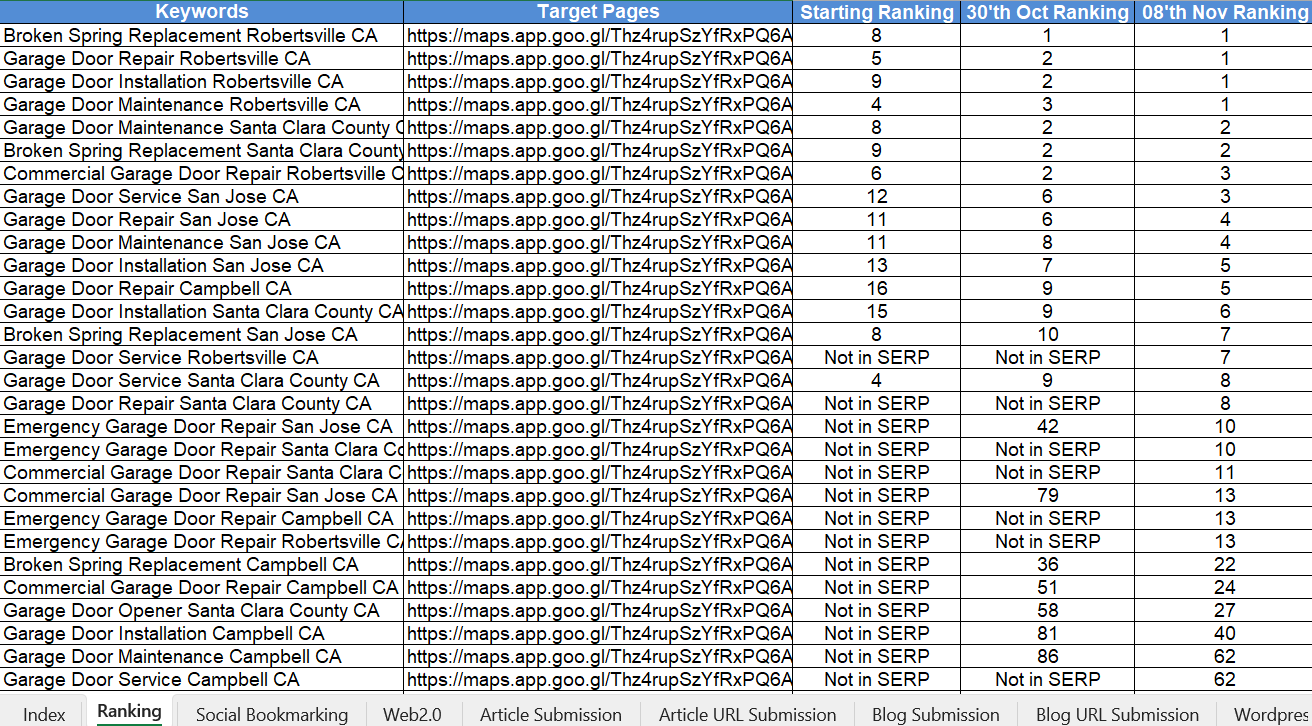The #1 Mistake Car Dealers Make in Online Advertising (And How to Fix It)
The #1 Mistake Car Dealers Make in Online Advertising (And How to Fix It)
Market Wiz reveals the critical error that could be costing your dealership valuable leads—and provides actionable solutions to turn your online advertising around.
Introduction
In the digital era, car dealers are increasingly relying on online advertising to drive traffic and convert leads. However, many dealerships unknowingly commit a critical error that undermines their entire digital strategy. At Market Wiz, we’ve identified the #1 mistake that car dealers make in online advertising—and more importantly, we’re here to show you how to fix it.
This guide will provide an in-depth analysis of the common pitfalls in online car sales advertising, explain why this mistake happens, and outline effective strategies to correct it. Whether you’re struggling with low click-through rates, poor ad targeting, or high customer acquisition costs, the insights in this guide will help you transform your online advertising approach.
For additional industry insights, visit our Digital Strategy for Car Sales page, and check out external research from Forbes Auto for the latest trends.
The Common Mistake Explained
After analyzing countless digital campaigns, Market Wiz has discovered that the #1 mistake car dealers make is neglecting to align their messaging and targeting with the customer’s buying journey. Many dealerships create generic ads that do not speak directly to the needs, desires, and pain points of their potential buyers.
This misalignment leads to low engagement, poor conversion rates, and wasted advertising budgets. In essence, while dealers may be attracting clicks, they’re not capturing the right audience—those who are truly interested in purchasing a vehicle.
To learn more about effective messaging, visit our Messaging Strategies page.
Why It Happens
There are several reasons why this mistake occurs:
- Lack of Customer Insight: Many car dealers rely on outdated assumptions about their audience instead of leveraging current data and analytics.
- Generic Ad Content: Advertisements that do not offer personalized or localized messaging tend to fall flat.
- Insufficient Testing: Failing to run A/B tests or analyze campaign performance prevents dealerships from understanding what resonates with their audience.
- Misallocation of Budget: Without proper targeting, advertising dollars are wasted on impressions that do not convert.
Understanding the root causes of this mistake is the first step toward fixing it. For more insights into customer analytics, see our Customer Insights resource.
Impact on Your Business
The consequences of this mistake can be severe:
- Low Conversion Rates: High traffic numbers mean little if the clicks do not convert into sales.
- Increased Costs: Wasting money on ineffective ads leads to higher customer acquisition costs.
- Missed Opportunities: When your ads don’t resonate with the right audience, potential buyers slip away to competitors.
- Brand Dilution: Inconsistent or generic messaging can damage your brand’s reputation and lower customer trust.
The impact of these issues can be seen in decreased revenue and a weakened market position. To explore more about how branding affects online sales, visit our Brand Strategies page.
How to Fix It
Fixing this critical mistake requires a multi-faceted approach. Here are actionable strategies that can help you align your messaging with your customer’s buying journey:
1. Conduct In-Depth Customer Research
Use data analytics, surveys, and focus groups to gain a detailed understanding of your target audience. Tools like SurveyMonkey and Google Analytics can provide invaluable insights into customer behavior.
2. Personalize Your Ad Content
Develop ad campaigns that speak directly to the needs of specific customer segments. Use localized messaging, tailor your offers, and incorporate personalized visuals. For more ideas, check out our Personalized Marketing page.
3. Implement A/B Testing
Run A/B tests to compare different ad creatives, headlines, and calls-to-action. This will help you identify the elements that drive the highest engagement and conversion rates.
4. Optimize Your Landing Pages
Ensure that the pages your ads lead to are optimized for conversion. This includes fast loading times, clear messaging, and prominent calls-to-action. Learn more about landing page optimization on our Landing Page Tips page.
5. Leverage Retargeting Strategies
Use retargeting ads to re-engage visitors who have shown interest but have not converted. This strategy can help recapture lost leads and boost your overall conversion rate.
By applying these strategies, you can correct your advertising approach, lower your costs, and significantly increase your conversion rates.
SEO & Content Optimization
One of the most effective ways to fix your online advertising mistake is to focus on SEO and content optimization. By aligning your website’s content with user intent, you can attract organic traffic that is more likely to convert.
- Keyword Research: Identify high-converting keywords relevant to your dealership. Use tools like Ahrefs and SEMrush for guidance.
- On-Page Optimization: Ensure your meta titles, descriptions, and content are optimized for your target keywords.
- Content Marketing: Develop blog posts, video content, and buyer guides that educate your audience and drive organic traffic. Visit our Content Marketing page for more tips.
Paid Advertising Best Practices
While fixing your organic advertising mistake is crucial, a balanced approach that incorporates smart paid advertising can further amplify your results. Here are some best practices:
- Targeted Campaigns: Use data-driven insights to create highly targeted ads that reach the right audience.
- Budget Allocation: Allocate your budget strategically to maximize ROI. Learn more about budgeting on our PPC Budgeting page.
- Ad Creative Optimization: Continuously test and optimize your ad creatives to find the best-performing combinations.
- Retargeting: Implement retargeting campaigns to capture leads that didn’t convert on their first visit.
For external insights on paid advertising, visit WordStream.
Integration & CRM Tips
Integrating your online advertising with your overall digital ecosystem is essential. This includes connecting your ad campaigns with your CRM system to track leads, analyze customer behavior, and streamline follow-up processes.
- CRM Integration: Connect your ad platforms with your CRM to centralize customer data and optimize lead nurturing. Visit our CRM Integration page for more information.
- Cross-Channel Consistency: Ensure your messaging, branding, and offers are consistent across all channels for a unified customer experience.
- Data Analytics: Use analytics tools to monitor campaign performance and make data-driven adjustments.
Case Studies & Success Stories
Real-world examples demonstrate the power of addressing the #1 mistake and implementing corrective strategies. Consider these case studies:
Case Study 1: Improved Conversion Rates through Personalized Ads
A leading car dealership revamped its ad campaigns by tailoring messages to specific customer segments. The result was a 45% increase in conversion rates and a significant reduction in customer acquisition costs.
Case Study 2: Enhanced Online Engagement via Social Media
Another dealership used targeted social media campaigns and interactive content to boost engagement. This strategy led to a 35% increase in online leads and improved overall brand perception.
For more inspiring success stories, check out our Case Studies page.
Frequently Asked Questions (FAQs)
1. What is the #1 mistake car dealers make in online advertising?
Many car dealers fail to align their ad messaging and targeting with the customer’s buying journey, resulting in wasted budget and low conversion rates.
2. How can I identify if my ads are misaligned with customer needs?
Use analytics tools and customer feedback to assess engagement and conversion rates. Low engagement and high bounce rates are key indicators.
3. What strategies can fix this misalignment?
Conduct in-depth customer research, personalize your ad content, optimize your landing pages, and implement A/B testing to fine-tune your messaging.
4. How important is A/B testing in online advertising?
A/B testing is crucial to understand what resonates with your audience and to continuously improve ad performance.
5. Can personalized ads really improve conversion rates?
Yes, personalized ads that address specific customer needs have been shown to significantly boost conversion rates.
6. What tools can help with customer research?
Tools like Google Analytics, SurveyMonkey, and social media insights provide valuable data on customer behavior and preferences.
7. How do I optimize landing pages for better conversions?
Focus on fast load times, clear messaging, compelling calls-to-action, and a mobile-friendly design. Our Landing Page Tips page has more details.
8. Is retargeting effective for car dealers?
Absolutely—retargeting helps recapture potential customers who have already shown interest, leading to higher conversion rates.
9. How can I measure the effectiveness of my ads?
Use metrics such as click-through rates, conversion rates, cost-per-click, and customer acquisition cost. Tools like Google Analytics are essential.
10. What is the role of content marketing in online advertising?
Content marketing supports online advertising by building trust, educating potential buyers, and driving organic traffic.
11. How do social media tactics integrate with online ads?
Social media tactics, including engaging posts and interactive content, help drive additional traffic and complement paid ad efforts.
12. Can a CRM system help improve ad performance?
Yes, integrating your CRM with your ad campaigns enables personalized follow-ups and better lead management.
13. What common pitfalls should I avoid in my ad campaigns?
Avoid generic messaging, lack of targeting, neglecting A/B testing, and poor landing page design.
14. How can I ensure my ads reach the right audience?
Use detailed audience segmentation and targeting options available on platforms like Google Ads and Facebook Ads.
15. Is online advertising cost-effective for car dealers?
When executed correctly, online advertising can deliver a high ROI, especially when mistakes are identified and corrected.
16. How does personalization impact customer engagement?
Personalized ads increase relevance, leading to better engagement, higher click-through rates, and improved conversions.
17. What external resources can help improve my ad strategy?
Check out Forbes Auto and WordStream for expert insights.
18. How do I handle negative feedback from ads?
Respond promptly and professionally to negative feedback, offering solutions and demonstrating your commitment to customer satisfaction.
19. Can I integrate my ads with my website?
Yes, ensure your ads link to optimized landing pages on your website for a seamless user experience. Visit our Integrated Marketing page for more details.
20. How important is mobile optimization?
Mobile optimization is critical, as a large portion of users browse on smartphones. A responsive design is key for conversions.
21. What role does video content play in ads?
Video content can significantly boost engagement by providing dynamic, visual storytelling that resonates with potential customers.
22. How do I balance organic and paid strategies?
Integrate both strategies to build a strong digital presence. Organic efforts support brand credibility, while paid ads drive immediate results.
23. What metrics define ad success?
Key metrics include click-through rates, conversion rates, cost-per-acquisition, and overall ROI.
24. How often should I update my ad campaigns?
Regular updates based on performance data and market trends are crucial to maintaining relevance and efficiency.
25. Where can I find more information on online advertising for car dealers?
Visit our Digital Strategy for Car Sales page or explore external resources like Forbes Auto.
Additional Keywords
For enhanced SEO, consider naturally integrating these keywords into your content:
- Online advertising mistakes
- Car dealer digital marketing
- Automotive online advertising
- Fix ad strategy car dealers
- Car sales online 2025
- Digital car advertising
- Effective online ads
- Market Wiz car marketing
- Automotive SEO strategies
- Content marketing for car dealers
- Social media car ads
- Conversion optimization auto sales
- Lead generation car advertising
- Dynamic pricing car ads
- Customer targeting car sales
- Personalized car ads
- Retargeting for car dealers
- Online auto advertising tips
- Automotive digital trends
- Effective car dealership ads
- Best online car ad practices
- Digital transformation in auto sales
- Ad optimization car dealers
- Automotive advertising case studies
- Fix online advertising errors
Conclusion
The #1 mistake car dealers make in online advertising is failing to align their messaging and targeting with the customer’s buying journey. This misalignment can lead to wasted budgets, low conversion rates, and ultimately, lost sales opportunities.
By conducting in-depth customer research, personalizing ad content, optimizing landing pages, and employing robust analytics and retargeting strategies, car dealers can correct this mistake and transform their digital advertising efforts.
At Market Wiz, our mission is to empower car dealers with the tools and strategies needed to succeed in a competitive digital landscape. Explore our extensive resources on Digital Strategy for Car Sales and get in touch with our team via our Contact page to learn more about how we can help you optimize your online advertising.
The #1 Mistake Car Dealers Make in Online Advertising (And How to Fix It) Read More »








Social Media Tactics
Social media plays a pivotal role in reaching your target audience and building trust. To fix your advertising mistake, focus on creating engaging, platform-specific content that resonates with potential buyers.